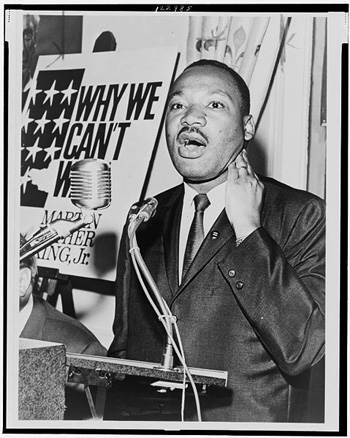
Dr. Martin Luther King, Jr. at a press conference, 1964
|
Oratory in America, 1775-Present From Patrick Henry’s “Give me liberty or give me death!” to Martin Luther King, Jr.’s “I have a dream”—and all those presidential State of the Union addresses in between—oratory plays a vital role in American history and culture. Orators have inspired or censured their audiences, spoken vividly of the future or the past, and sought to change prevailing ideas in order to improve or purify American society. Even in a digitized, fast-moving media environment, oratory retains an important role: it remains an art, a vital form of political communication, a sometimes-religious source of inspiration, and at times a source of anxiety when Americans worry that charismatic figures might be leading us astray. As these comments indicate, oratory is a place where ideas of community, values, ideals, and character are articulated, debated, and enacted. This class analyzes the history of oratory in America on three levels. First, we examine canonic speeches on their own in order to learn specific forms of rhetorical argument and arrangement. We will also examine guidebooks for public speaking from three moments in American history—the 1790s, the early 20th century, and the present day—to understand how stylistic expectations for voice, facial expression, and gesture have changed. Second, we will discuss literary and historical scholarship that examines oratory closely, which will allow us to see its place in American culture over time. This will not only provide historical context for our study, but will demonstrate how to write about oratory while bringing in both a speech’s subject matter and the style of its arrangement or delivery. Finally, we will attempt to understand how current-day oratory—from political speeches archived online or even in the form of students’ own oral presentations—retains some of the expectations of the past, while still responding to the changed limitations and possibilities of new media. |



